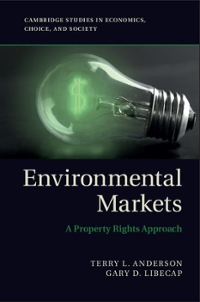Answers to this
Consider a two-period economy that has at the beginning of period 1 external wealth of 100. GDP in both periods is 120. The interest rate in periods 1 and 2 is 10 percent. In period 1, the country runs a current account decit of 5 percent of GDP. At the end of period 2, the external wealth must be equal to zero. 1. Find the level of the trade balance in period 1, the level of the current account balance in period 1, and the country's external wealth at the beginning of period 2. 2. Is the country living beyond its means? To answer this question, nd the country's current account balance in period 2 and the associated trade balance in period 2. Is this value for the trade balance feasible? [Hintz Keep in mind that since expenditures cannot be negative, the trade balance cannot exceed GDP]. 3. Now assume that in period 1, the country runs instead a much larger current account decit of 10 percent of GDP. Find the country's external wealth at the end of period 1. Is the country living beyond its means? If so, why? 4. What is the maximum current account decit (as a share of GDP) that this country can have at time 1 and still live within its means? HOMEWORK 4 1. Consider the following regulation problem. Let x be output, c be marginal cost of output and R be net return of production. The firm's net profit before regulatory payments is given by R-x - cx, for 0 5 x $ 1. Note that x has to lie in the unit interval and that output has been normalized to equal revenue. Assume that the regulator does not know the finn's cost coefficient c, which can take on n values: 0 So, S...Sc, 5 1. The regulator assesses probability p, 2 0 to each of the i possible marginal cost levels. The firm knows its marginal cost and chooses a. The regulator can tax the firm based on its realized revenue. a Set up the program that solves for the regulator's optimal policy, expressed as a direct revelation mechanism. Assume that the regulator's objective is to extract as much surplus from the firm as possible, subject to the constraint that the firm can quit if profits are negative (and pay nothing). b. Draw a diagram that shows how the firm chooses its best response as a function of its cost. Prove that the lim's output choice & is a non-decreasing function of marginal COST c. Show that the optimal policy takes the simple form: a fixed charge T for producing anything (hence, all firms with c s T produce and those with e > T do not). It suffices that you give an argument for a = 3. *2. Consider a screening model of the following son. The agent produces output q at a cosi c(q, f) - qp, where q is output and A is a cost parameter. The principal, who cannot observe either c or A, offers to pay the agent the amount p(q) if the agent produces output q. Given this incentive scheme, an agent with cost parameter A responds by producing the amount qip)- What kind of payment scheme p(q) should the principal choose in order to implement the response function q(B) - 1/8-7*3A seller may supply a single object to a buyer. Let x be 1 if trade takes place and 0 if not. Let to be the amount of money that the seller receives and to the amount that the buyer pays. Let v be the buyer's valuation and s be the seller's valuation of the object and assume preferences are quasi-linear. We can then normalize utilities so that the seller's utility is ts - ex and the buyer's utility is vx - to. Assume the preference parameters v and c are independently drawn from a uniform distribution on [0,1]. The buyer knows v and the seller knows c. a. What is the efficient rule for trade? b. Let my and me be the seller's respectively the buyer's reported preference for the object. Determine the set of direct mechanisms (expressed as a function of the reports) that admit truth telling as a dominant strategy and implement efficient trade (ie. the set of Groves mechanisms). c. Show that there is a unique Groves mechanism that has the property that whenever trade does not occur, the transfer payments are set equal to zero (to = ts = 0). Is this mechanism feasible? d. Show that there is no Groves mechanism for which the budget breaks even for all reported preferences. 4. Suppose there are a continuum of sellers and a continuum of buyers (where each continuum is normalized to one). Each seller has one unit of the good and has valuation vs drawn (independent from those of the other sellers and buyers) from the distribution F, on [a,b]; similarly, each buyer has unit demand and has valuation vo drawn (independently) from the distribution Fr on [c,d]. Assume that b > c (not everyone ought to trade). Let m,(vs) and my(v.) denote a seller's probability of selling and a buyer's probability of buying, respectively. Let to(v,) and to(v.) denote a seller's transfer and a buyer's transfer (from the planner), respectively. Among the many possible mechanisms that might be used, consider the "Walrasian mechanism": m,(v;) =1 and t.(Vs) =p ifvs p and m,(v.) =0 = t,(Vs) if vs> p. my(Vb) =1 and to(vb) = - p if vs









